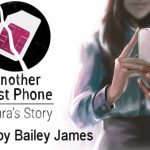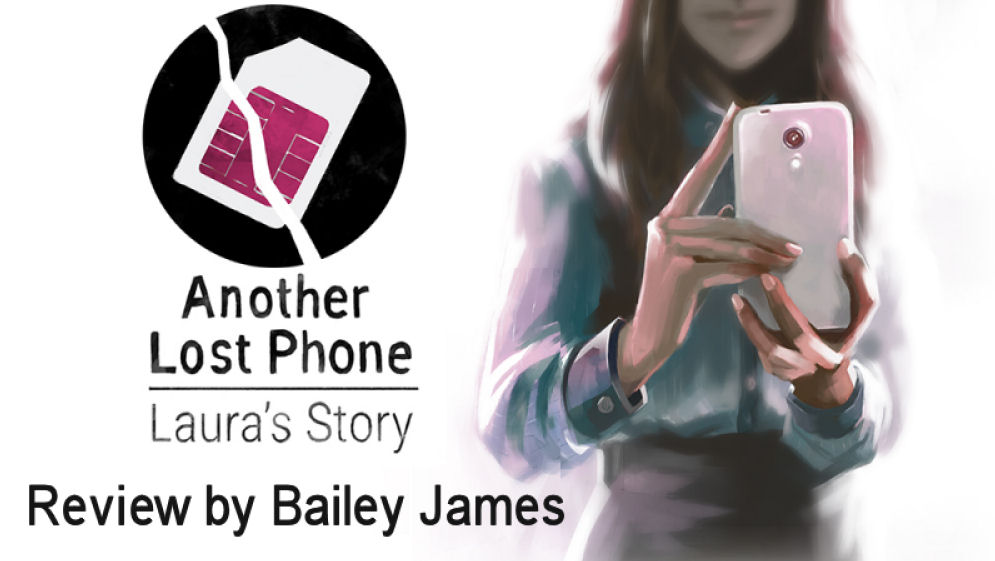Another Lost Phone: Laura’s Story Review
The developers have managed to emulate different methods of communication that represent the many selves that can inhabit one person (and her device) in different circumstances and with different people







In 2017, the French game studio Accidental Queens released their first title, A Normal Lost Phone, an immersive gameplay experience that takes place entirely on the interface of a character’s phone. It’s not your phone, though – it’s fallen into your hands somehow, and part of your goal is to discover why it’s no longer in the company of its owner.
Less than a year later, the studio has already created a sequel. Another Lost Phone: Laura’s Story follows much the same trajectory: mystery phone once belonged to mystery person with mystery past. The only way to learn what happened is to search the device for clues, digging deeper and deeper into the personal life of the owner to uncover her secrets.
This particular phone belongs to Laura. It’s clear from the distressed text messages she’s received that she’s vanished unannounced and people are looking for her. Other details swim to the surface: she has a sister, a boyfriend, a job. She likes to go running outdoors. She’s renowned for her stuffed zucchini recipe. If Laura’s abandoned phone didn’t hint at something sinister, she would probably strike you as an utterly normal woman.
Without giving too much away, Laura is in a challenging relationship. We get to see her situation unfold over the course of several months, from first getting to know her partner Ben to his panicked reaction when she vanishes, and being able to show this progression over time allows for the partnership to unfold in a way that’s realistic. We’re also privy to Laura’s reflections on her relationship through conversations with friends and family, and we can see the way her perception shifts as she cycles through alternating feelings of happiness and guilt, comfort and denial.
I would have liked to see more dimension in the form of a more specific articulation of Laura’s life outside her romantic relationship, but perhaps this flattening of her personality was an unavoidable side-effect of the relationship she found herself in. Nevertheless, the quality of the writing is the sharpest element of the game. There’s real attention paid to the many channels people use to communicate – texts to friends have a different tone than emails to coworkers or messages on a professional networking site. The developers have managed to emulate different methods of communication that represent the many selves that can inhabit one person (and her device) in different circumstances and with different people.
Accidental Queens has landed on an ingenious design that makes gameplay so intuitive it is indistinguishable from the digital actions we perform every day. The game drops the player straight onto the home screen of the misplaced device without any need for a tutorial because the interface is so instinctual to anyone who’s ever used a smartphone before. We know without being told to check for new text messages, to play with the settings, to try calling the owner’s relatives because it’s what we would do if we found a missing phone in the real world.
The game’s aesthetic feels idiosyncratic and personal — one imagines that Laura selected the background shades of deep pink and dusty rose herself. Her music shuffles on a loop while you scroll through her messages, notes and calendar reminders. Movement around these screens is fluid, and it’s just as easy to jump around and get distracted in the game as it on my own device.
Our phones are the most organic environments in our own lives to contain puzzles – despite a lifetime of hopeful searching, I’ve never discovered a wooden chest held shut by a complex mechanical lock that required my keen intellect to open it. But I do need several passwords and accounts to keep my data safe.
The puzzles in this game are very similar to those in A Normal Lost Phone (there are only so many ways to lock down a public WiFi account), but they work well as a method for doling out the story. Characters unfold gradually as new apps and accounts are unlocked, and the sensation is of peeling back layers of Laura’s persona, finding her private self underneath the external façade of functional happiness that she projects to the world.
Our phones, constant companions in our daily lives, are inextricable from the intimacy we share with the people we know. We clutch them in our hands, hold them up to our faces, giving them full access to our activities and communications in an act of implicit trust. They reveal us to be deft pretenders and reflexive chameleons, adapting to suit our purposes.
One of the things that most intrigued me about Another Lost Phone: Laura’s Story is a pre-game disclaimer that doesn’t exist in the first installment. It reads: “Searching through the contents of another person’s phone is a violation of the owner’s privacy. You are about to enter the private life of a fictional character, but do not repeat these actions in situations outside the parameters of the game without the consent of people involved.” It’s an unexpectedly decisive opener to a game that seeks to explore how much we deserve to know about the people we’re intimate with. In our own lives, there aren’t such clear answers.
System Requirements (OS only)
OS: Windows 7, 8 or 10 – 64-bit
OS: Mac OS X 10.9+
OS: Ubuntu 12.04+, SteamOS


Leave a Reply